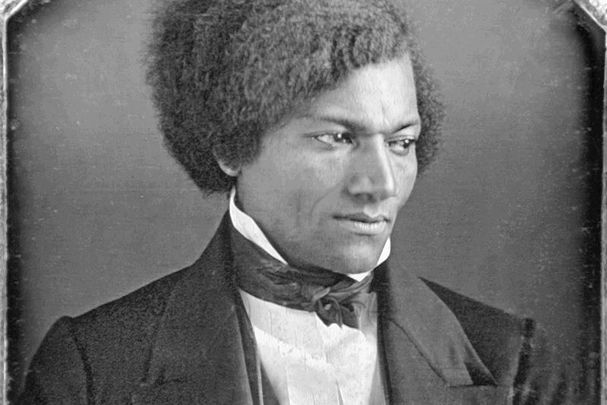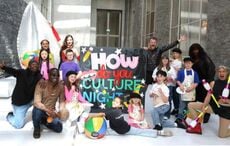The Irish Consulate in New York and the African American Irish Diaspora Network will host the virtual launch of the Frederick Douglass Way in Dublin this Friday, May 14 at 1 pm EST.
In August 1845, 27-year-old American man Frederick Douglass, designated by his government to be a “fugitive slave” arrived in Dublin. He had intended to stay in the city for four days, but the warmth of the welcome he received meant that he stayed in Ireland for four months. He described his time in the country as “transformative” and the “happiest time of his life.”
Professor Christine Kinealy, the author of Black Abolitionists in Ireland, has created the Frederick Douglass Way Way, which will allow Dublin natives and visitors alike to follow in the footsteps of Douglass and retrace his 1845 visit to Dublin.
Kinealy and co-host Dennis Brownlee will be joined by special guests to follow Douglass’s footsteps in Dublin.
Registration for Friday's free event is available online here through EventBrite.
We are delighted to partner with the @aaidnetwork to mark the virtual launch of the Frederick Douglass Way in Dublin next Fri May 14 at 1pm ET!
Join us as @QuinnipiacU Prof. Christine Kinealy maps out the Way, retracing Douglass' visit to the city in 1845 https://t.co/ds0s5JnV7D pic.twitter.com/9YooaZSunq
— Irish Consulate NYC (@IrelandinNY) May 4, 2021
The new Frederick Douglass Way in Dublin features ten locations on both the north and south side of Ireland's capital city:
- 35 Eccles Way - home of James Haughton, one of Frederick's hosts
- Rotunda Meeting Rooms - where many abolitionists spoke
- Music Hall, Abbey Street - where Douglass delivered a lecture
- Epic Museum / National Famine Memorial - a special marker for the new Way
- O'Connell Statue, near Burgh Quay - site of the now-demolished Conciliation Hall where Douglass met with Daniel O'Connell
- Pearse Street, formerly Great Brunswick Street - where Douglass stayed during his visit
- 58 Merrion Square - home of Daniel O'Connell
- Mansion House, Dawson Street - where Douglass dined with the Lord Mayor
- Friends' Meeting Room, Eustace Street - where Douglass delivered a lecture
- City Hall (formerly the Royal Exchange), Dame Street - where Douglass delivered his first lecture
In his memoir "My Bondage and My Freedom: Part I – Life as a Slave, Part II – Life as a Freeman," Douglass wrote of Ireland:
Eleven days and a half gone and I have crossed three thousand miles of the perilous deep. Instead of a democratic government, I am under a monarchical government. Instead of the bright, blue sky of America, I am covered with the soft, grey fog of the Emerald Isle [Ireland]. I breathe, and lo! the chattel [slave] becomes a man. I gaze around in vain for one who will question my equal humanity, claim me as his slave, or offer me an insult. I employ a cab—I am seated beside white people—I reach the hotel—I enter the same door—I am shown into the same parlour—I dine at the same table—and no one is offended ... I find myself regarded and treated at every turn with the kindness and deference paid to white people. When I go to church, I am met by no upturned nose and scornful lip to tell me, 'We don't allow n****** in here!'
Douglass first encountered Daniel O'Connell, who became known as Ireland's Catholic Emancipator, when the Irish nationalist made a speech in Dublin on September 29, 1845. Days later, Douglass penned a letter to W.L. Garrison back in the US (which is included "Frederick Douglass and Ireland," edited by Christine Kinealy) which shows the impact O'Connell quickly had on him:
"I have heard many speakers within the last four years—speakers of the first order; but I confess, I have never heard one, by whom I was more completely captivated than by Mr. O’Connell."
Earlier this year, Douglass's Irish visit in 1845 was commemorated with a week-long all-island collaborative event series in Ireland.
Ahead of the 175th anniversary of Douglass's Irish visit, Ireland's Minister for Foreign Affairs Simon Coveney said: "I am looking forward to celebrating the anniversary of the historic meeting between Frederick Douglass and Daniel O’Connell 175 years ago. The connection between these two great men, and the legacy both have left, remind us of the imperative always to strive for equality and liberty, wherever we see oppression or exclusion."
Read more

Love Irish history? Share your favorite stories with other history buffs in the IrishCentral History Facebook group.




Comments